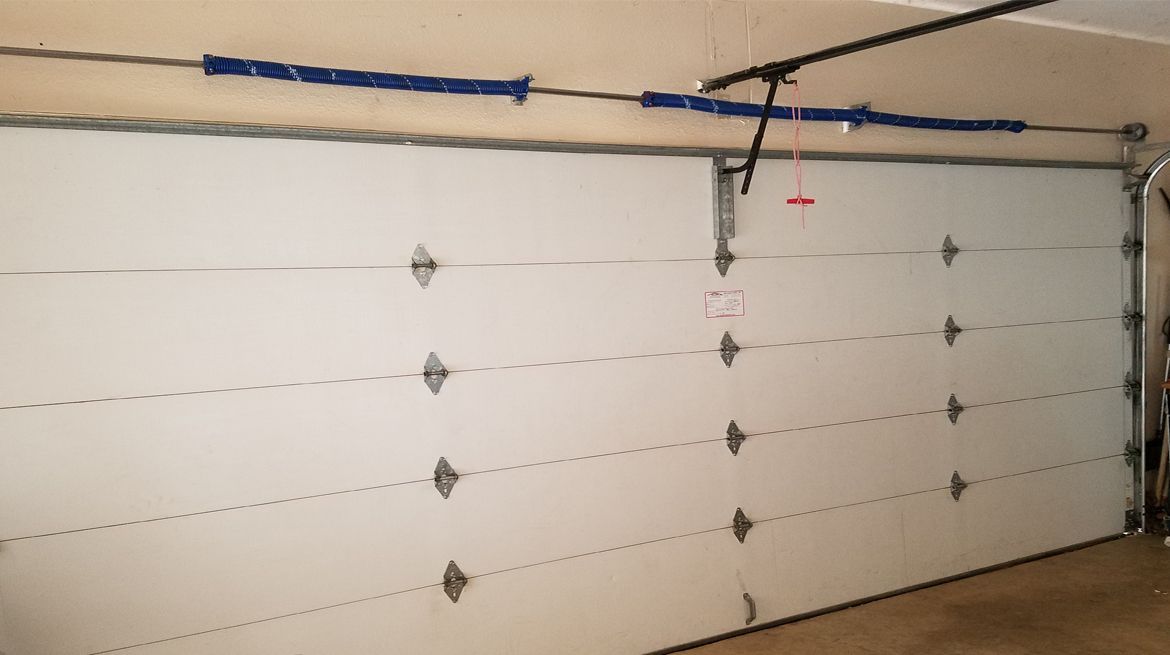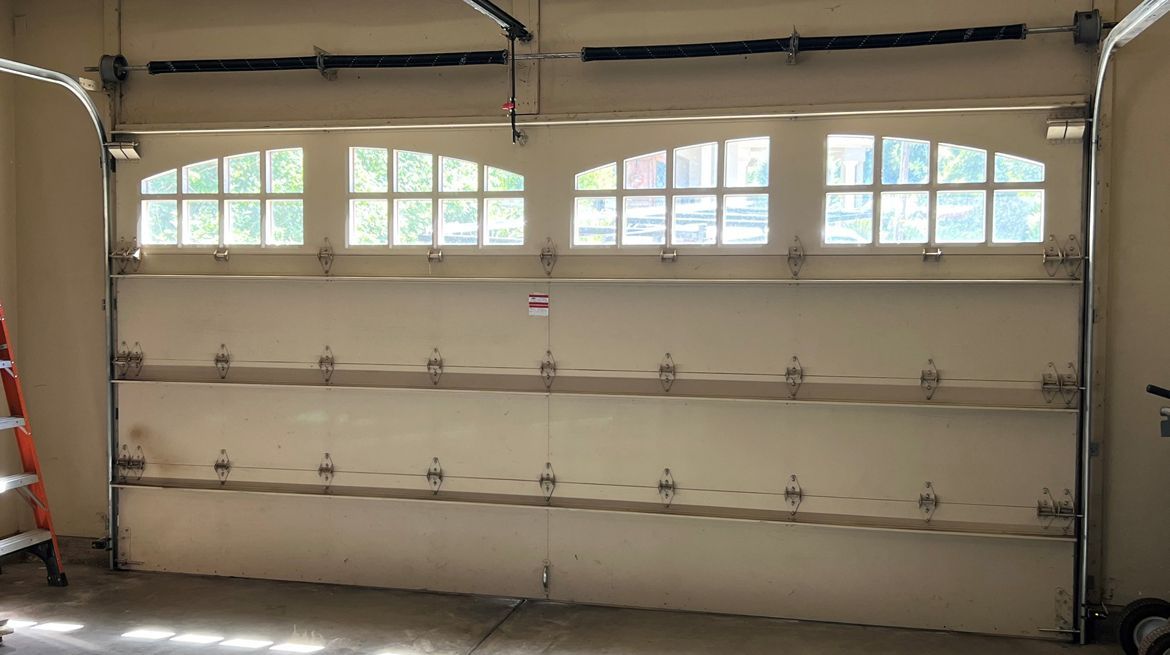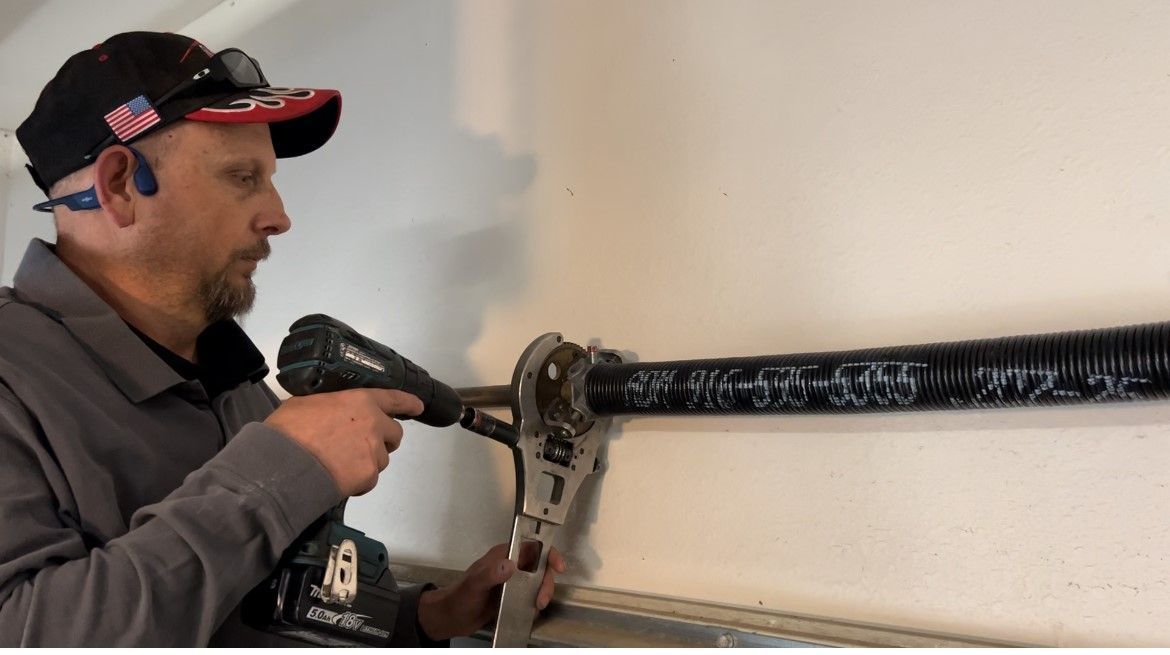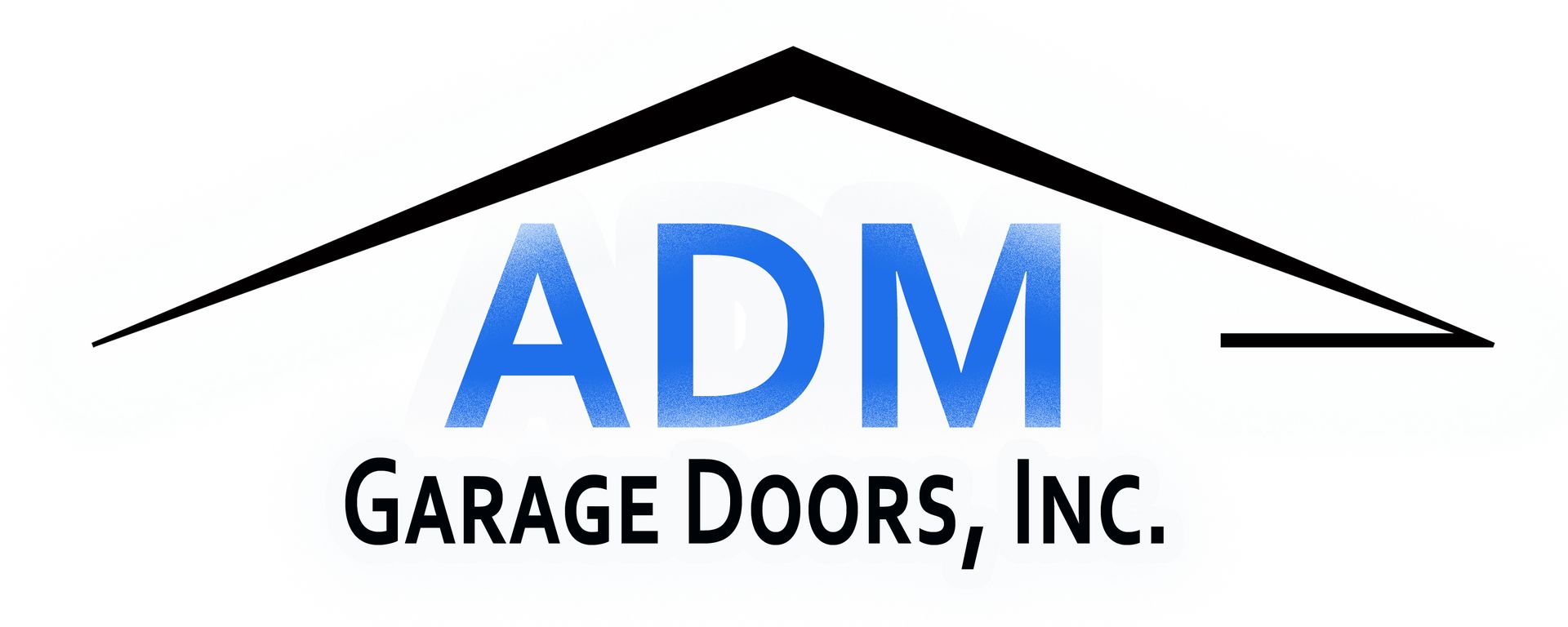Garage Door Spring Broken?

- Extremely dangerous: Springs are under high tension — incorrect handling can cause serious injury or death
- Special tools required: Standard tools are not safe or effective for this job
- One wrong move: Can lead to sudden spring release, broken fingers, facial injuries, or worse
- DIY attempts often backfire: Stripped bolts, misalignment, or damaged openers are common results
- No room for error: Torsion systems are calibrated precisely for your door's weight and balance
- Professional repairs include: Safety inspection, correct spring sizing, balanced tension, and tested operation
- Cost of DIY gone wrong: Far more expensive than hiring a pro — emergency service, part replacements, or hospital bills
COMMUNITIES WE SERVE IN FOLSOM
95630 - Folsom
95630- The Enlcave, Folsom Lake College, Steeplechase, Veranda, Older Downtown Folsom, Fieldstone Meadows, Ridgestone meadows, Ridgeview, Reflections, Empire Ranch, Sibley Square, Folsom Lake, Willow Springs, Hoxsie Ct, Broadstone, Blue Ravine Oaks, Cimmaron Hills, Morningside,
The Falls at Willow Creek, Parkway, Briggs Ranch, Lake Pointe, Folsom Industrial Park, The Knolls, La Collina Dal Lago, Cobble Hills Ridge, Cobble Ridge, Sierra Woods, Folsom Heights, Oak Vista Estates, Folsom Sierra, Camberwell/Kennnerly, Los Cerros, Perserve at Blue Ravine, Natomas Heights, Prairie Oaks, Valley Pines/Baldwin Dam, Rancho Diablo, Willow Creek ,Willow Creek East, American Rivers Estates, Willow Creek Estates South



Single Garage Door Torsion Spring Facts (10K)
Built for 10,000 cycles (1 cycle = open + close)
Typical lifespan: 3–7 years depending on daily use
Common failure sign: Door feels heavy or won’t open
What breaks: The spring snaps, often with a loud bang
Dangers: Forcing it can damage your opener or cause injury
Pro tip: Replacing before failure avoids downtime and extra costs
Better option: Upgrade to high-cycle spring for longer durability
Double Garage Door Torsion Spring Facts (10K)
- Two springs share the load on heavier, double-wide doors
- Rated for 10,000 cycles (1 cycle = open + close)
- Average lifespan: 5–7 years with regular use
- Failure signs: Door lifts unevenly, struggles to open, or one side sags
- Risk factor: If one spring breaks, the second is under extreme strain and may fail soon after
- Safety tip: Always replace both springs together to avoid imbalance and future issues
- Upgrade available: High-cycle springs (20K–50K) offer longer life and smoother performance
Double Garage Door Torsion Spring Facts (25K)
- Designed for 25,000 open/close cycles — 2.5x the life of standard 10K springs
- Average lifespan: 12–15 years with normal daily use
- Supports heavier, double-wide garage doors
- Improved reliability: Fewer breakdowns and reduced emergency repairs
- Balanced load: Two springs work together to lift the door evenly
- Recommended: Replace both springs together for safety and performance
- Great for: High-use households or customers who want long-term value

Double Garage Door Torsion Spring Facts (45-60K)
- Ultra high-cycle springs rated for 65,000 open/close cycles
- Lifespan: 20+ years with typical residential use
- Ideal for high-traffic homes — large families, rental properties, or frequent usage
- Maximum durability: Built for long-term performance and minimal maintenance
- Enhanced safety & balance: Two springs share the load evenly on double doors
- Fewer breakdowns: Reduces risk of unexpected failure and costly emergencies
- Premium upgrade: Longest-lasting option available — invest once, enjoy peace of mind

Triple Garage Door Torsion Spring Facts
- Used for large, heavy, or custom triple-wide garage doors
- Three torsion springs share the load for smoother operation and balanced lifting
- Built to handle oversized doors or high-cycle residential setups
- Improves safety: Reduces strain on each spring and minimizes risk of sudden failure
- Typical cycle ratings: Available in 10K, 25K, 50K, and 65K+ options
- When one fails: The door may still operate, but unevenly and dangerously — immediate service is recommended
- Ideal for: Luxury homes, multi-car garages, and custom doors requiring extra lift capacity
- Maintenance matters: Regular inspections extend lifespan and prevent emergency breakdowns

Quadruple Garage Door Torsion Spring Facts
- Used on oversized, industrial, or custom multi-panel doors
- Four torsion springs distribute the extreme weight evenly
- Provides maximum lifting power and balance
- Required for doors that exceed standard residential limits
- Redundancy: If one spring fails, the system can often still operate temporarily (but not safely)
- Maintenance is critical: High tension = high risk — regular inspections are a must
- Lifespan varies by cycle rating: Available in 10K, 25K, and 50K+ options depending on usage
- Best for: Custom garage setups, or multi-bay garages with extra-wide doors

Martin Garage Door Torsion Spring Facts

Wayne Dalton Torque Master Garage Door Spring Facts
- Enclosed Design: Unlike traditional torsion springs, TorqueMaster springs are enclosed inside a steel tube — marketed as safer but harder to diagnose or service.
- Proprietary System: Wayne Dalton uses a proprietary setup — meaning parts are brand-specific and not interchangeable with standard torsion systems.
- Limited Cycle Life: Most original TorqueMaster springs are rated for 10,000 cycles — often needing replacement sooner than expected with frequent use.
- Higher Replacement Costs: The custom nature of the system means fewer techs service it and replacement parts are more expensive than standard torsion setups.
- Difficult DIY Repair: Special tools and knowledge are required — the hidden spring and unique winding system make this one of the hardest systems to work on safely
- Conversion is Popular: Many homeowners choose to convert to standard torsion spring systems, which are more reliable, easier to service, and more cost-effective long-term.
- Safety Misconceptions: While enclosed springs appear “safer,” they can fail silently, creating hidden danger and false confidence.
- Tensioning is done by drill: not winding bars.
- Few technicians service it: not widely supported.

Wayne Dalton Torque Master Plus Garage Door Spring Facts
- Enclosed Design: Unlike traditional torsion springs, TorqueMaster springs are enclosed inside a steel tube — marketed as safer but harder to diagnose or service.
- Proprietary System: Wayne Dalton uses a proprietary setup — meaning parts are brand-specific and not interchangeable with standard torsion systems.
- Limited Cycle Life: Most original TorqueMaster springs are rated for 10,000 cycles — often needing replacement sooner than expected with frequent use.
- Higher Replacement Costs: The custom nature of the system means fewer techs service it and replacement parts are more expensive than standard torsion setups.
- Difficult DIY Repair: Special tools and knowledge are required — the hidden spring and unique winding system make this one of the hardest systems to work on safely
- Conversion is Popular: Many homeowners choose to convert to standard torsion spring systems, which are more reliable, easier to service, and more cost-effective long-term.
- Safety Misconceptions: While enclosed springs appear “safer,” they can fail silently, creating hidden danger and false confidence.
- Tensioning is done by drill: not winding bars.
- Few technicians service it: not widely supported.

Wood Tilt-Up/ Flip-Up Garage Door Extension Spring Facts
- Commonly found on older one-piece wood doors that swing outward and upward in a single panel.
- Spring tension stretches and contracts to counterbalance the door weight.
- Outdated design — less efficient and more prone to sudden failures than modern torsion spring systems.
- Noisy operation due to heavy weight and uneven wear.
- Heavier wood doors put more strain on extension springs, leading to frequent breakage.
- Alignment issues and hardware fatigue are common, especially if the door warps
- Many homeowners upgrade to sectional doors with torsion springs for better performance and safety.

